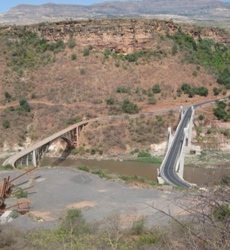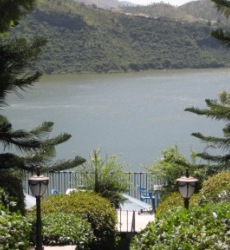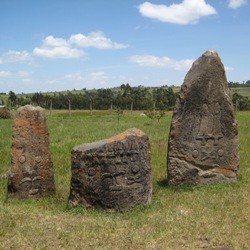Ethiopia - Abyssinia
Ethiopia is the tenth largest nation in the Northeastern Africa (horn of Africa) covering an area of 1,133.380 km2 /437,600 square miles and sharing its international borders to west with the Sudan, to the east Somalia, to the south Kenya, to north Eritrea and to northeast Djibouti with it actual location in between 3.5-15oN and 33-48oE.
Ethiopia is a remarkably diversified land, a country of many contrasts, colorful cultural mosaic, place for discovery of human origin spectacular natural beauty together with world’s ancient history and civilization.
Its landscapes are predominantly characterized by dramatically formed huge rugged volcanic highlands and plateaus (1500-4000 meters/4,921-13,123 feet). The temper- ature varies from Danakil depression 50oc/122oF (one of the lowest points in the planet 120 meters below sea level) to Africa’s forth highest mountain peak Ras Dashen or Ras Dejen (4624 meters/ 15,200 feet) with sometimes 8oc/ 46oF range of temperature. The Great East African Rift Valley runs from southeast of the country all the way down to the southern lowlands bisecting the major highlands massifs spotted with spectacular lakes.
Ethiopian highlands are sources for most of big river systems in such as Tekeze, Omo, Wabi Shebelle and the Blue Nile, draining across the international neighboring countries borders and that is why it said to be “The Water Tower of north eastern Africa”.
Basically, two major natural factors influence the weather conditions in Ethiopia and both of them are responsible for country’s temperate climate, the elevation and Ethiopia’s close geographical location to the equator. The Monsoon wind blowing from the Atlantic and Indian Ocean to Ethiopian highlands results the rainy season starting in June through mid-September while the wind blowing from Red Sea results in relatively small precipitation during February and March in the highlands and some southern parts of the country. The lowlands and the southern part of the Great Rift Valley experience seasonally temperate, dry, hot and humid climate.
Ethiopians officially follow their own calendar of “13 months of sunshine” of which 12 months with 30 days each, and a unique month of 5 days or depending on the leap year 6 days besides, The 24 hours of a day is divided into 12 hours of daylight and 12 hours of dark.
Since the most part of Ethiopia’s land is elevated, it is endowed mainly with Afro-montane type of woodland vegetation and other widely varied zones which start from the lowest desert and semi-desert scrubs, savannas to woodland, evergreen forest and Afro-alpine vegetation. The Rift valley and lowland are predominated by Acacia, Boswellia trees, grasslands, savannas and thorny bushes while the less elevated open woodlands consist of bush land and places situated at relatively higher and fresher altitude suites bigger trees such as Juniperus procera. At highest elevation some endemic flora can be found.
Ethiopia is home to numerous wildlife and birdlife in national parks such as Siemen, Bale, Awash, Mago and Omo. There are about 835 different species of birds, of which 26 are endemic and semi-endemic. Ethiopia is also habitat where hundreds of mammals live, among which the Walia Ibex (Capra walie), Abyssinian or Ethiopian Wolf (Canis simensis), Mountain Nyala (Tragelaphus buxtoni), Gelada Baboon (Thercopithecus gelada) and Giant Mole Rat (Tachyoryctes macrocephalus) are exclusively discovered.




